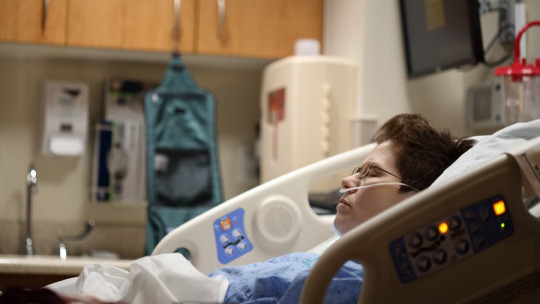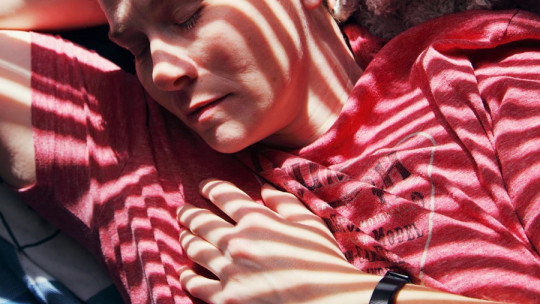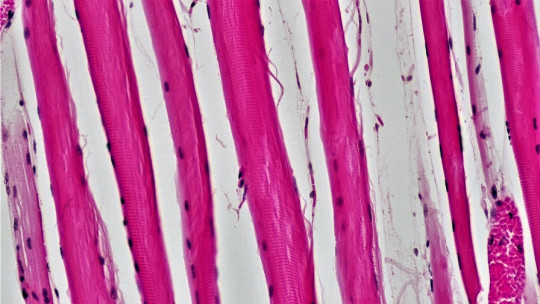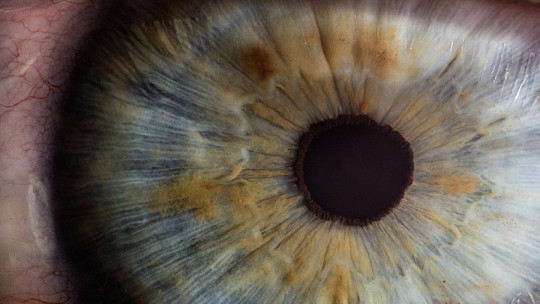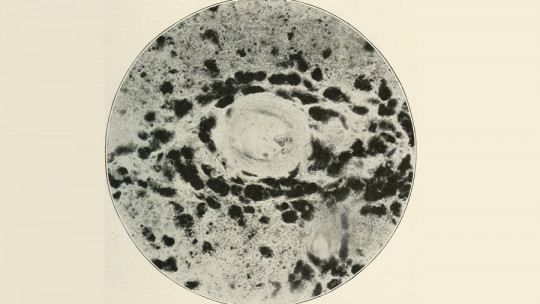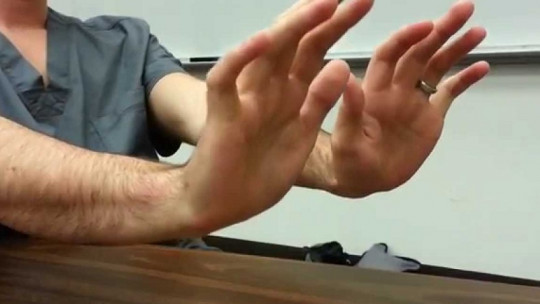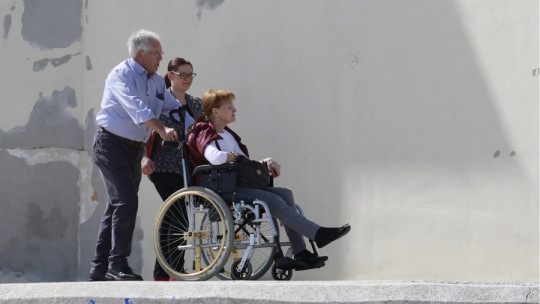
Movement disorders are a set of pathologies that are characterized by the decrease, loss or presence in excess of body movements that seriously affect the quality of life of people who suffer from them.
In this article we explain What are they, what types of movement disorders exist and what is their treatment?
What are movement disorders?
Movement disorders include a group of disorders in which The regulation of motor activity deteriorates and alterations occur in the shape and speed of body movements without cerebellar strength, sensation or function being directly affected.
These types of disorders can be caused by diseases, genetic conditions, medications or other types of factors. Furthermore, a movement disorder may constitute the only clinical expression of a specific disease or can be part of a set of neurological manifestations of more complex diseases
The risk of developing a movement disorder increases with age. A previous history of stroke and the presence of cardiovascular risk factors, such as high blood pressure or diabetes, may increase the risk of developing a circulation-related movement disorder.
Types of movement disorders
From a clinical perspective, two large groups of movement disorders can be differentiated: hypokinetics, characterized by slow or reduced movements; and hyperkinetics, which are characterized by excessive movements or the presence of abnormal involuntary movements.
Hypokinetic movement disorders
Movement disorders or hypokinetic syndromes include all those movement pathologies in which it is impoverished and slowed down, affecting the associated voluntary and spontaneous movements.
The most common hypokinetic disorder is the so-called parkinsonian syndrome, which consists of an alteration in the functioning of the cortico-subcortical motor circuit responsible for correctly generating body movements. This syndrome presents several common symptoms, such as bradykinesia, tremors, and rigidity.
In bradykinesia, motor slowing occurs at the beginning ; Later, during the execution and completion of the voluntary movement, repetitive or alternating movements of the extremities occur, observing a progressive reduction in speed and amplitude.
Three components can be distinguished in bradykinesia: motor slowing or bradykinesia itself, akinesia or poverty of spontaneous movements (with delay in the initiation of movement or the change between fluid movements) and hypokinesia, which consists of a decrease in range of motion.
As for tremors, the most characteristic tremor in hypokinetic movement disorders is the resting tremor, of low frequency (between 3 and 6 Hz). This tremor usually appears when the muscles have not been activated and decreases when performing a specific action. Action tremor may also exist, but is less common. However, a parkinsonian syndrome may exist without evidence of tremors.
Finally, The resistance that a part of the body opposes to passive mobilization is called rigidity In parkinsonian syndromes it can present in the form of a cogwheel, where brief episodes of opposition appear alternating with episodes of relaxation.
It can also be manifested by a constant resistance, called a lead tube, in which the intensity of the resistance remains constant throughout the entire range of movement, whether extended or flexed (without changing when varying the speed with which the arm is mobilized). part of the body, unlike spasticity).
Hyperkinetic movement disorders
Hyperkinetic movement disorders are those in which there is an excess of abnormal and involuntary movements. The main forms are: tics, choreas, ballismus, athetosis, myoclonus and dystonias. Let’s see what each of them consists of.
1. Tics
Tics are stereotyped movements, without a specific purpose, which are repeated irregularly. They are characterized because they can be voluntarily suppressed and increase with factors such as stress or anxiety. They can be classified into primary (sporadic or hereditary) and secondary, motor and vocal, simple and complex tics.
The most severe form of multiple tics is known as Gilles de la Tourette Syndrome, an autosomal dominant inherited disorder, associated with defects in chromosome 18. This disorder manifests with multiple motor tics and one or more phonic tics. These tics occur several times a day, practically every day for more than a year. Their severity and complexity may vary over time.
To treat this type of abnormal movements, such as tics, pharmacological treatment based on neuroleptics, clonidine and antidopaminergic drugs is usually necessary.
2. Koreas
Chorea is a movement disorder that refers to arrhythmic, irregular, rapid, uncoordinated and continuous movements that affect any part of the body.
The causes of this movement disorder are multiple and rare: hereditary (Huntington’s disease, neuroacanthocytosis, Fahr Syndrome, etc.), metabolic and endocrine (hyperparathyroidism, hyperthyroidism, etc.), vasculitis (for example, systemic lupus erythematosus ), due to basal ganglia stroke and pharmacological.
Huntington’s disease is the most common type of hereditary chorea It can start at any age, although it has a higher incidence in people between 40 and 50 years old, slowly evolving towards death over a period of 10 to 25 years. Survival is shorter among patients with juvenile onset of the disease.
Pneumonia and another series of intercurrent infections are usually the most common cause of death. There is a family history in almost all patients with Huntington’s disease. It is a hereditary disorder with an autosomal dominant character and complete penetrance, and is the result of a genetic defect on chromosome 4. This disease debuts at earlier ages in successive generations.
3. Ballism
Ballismo is a severe form of chorea that produces sudden, involuntary movements of great amplitude It usually appears suddenly but can develop over days or even weeks. This movement disorder usually subsides during sleep.
The movements of ballismo are so violent that they can lead to death from exhaustion or cause joint or skin injuries in the person who suffers from it. It frequently affects one hemibody (hemiballismus), although, sometimes, it can affect only one limb (monoballismus), both lower limbs (parabalismus) or, in rarer cases, all four limbs (biballismus or lateral ballismus)..
4. Athetosis
Athetosis is a movement disorder that occurs in a quarter of cerebral palsy cases This disorder is caused by lesions in the extrapyramidal system and manifests itself in slow, meandering, uncontrolled, involuntary movements without a specific objective.
The muscles of the mouth are affected, and that is why patients who suffer from athetosis often present language disorders. It can also occur as an abnormal reaction to estrogen or some antidepressant drugs.
5. Myoclonus
Myoclonus consists of involuntary, sudden and brief movements, caused by active muscle contraction or sudden inhibitions of muscle tone They can be classified, according to their origin, as: cortical, subcortical, spinal or peripheral.
Due to their distribution, they are classified as focal (involving a discrete group of muscles), segmental or generalized (generally of progressive cause and associated with epileptic disorders). And due to their form of presentation, they can be spontaneous, action or reflex myoclonus.
6. Dystonias
These types of movement disorders occur involuntarily and sustainably, and produce a deviation or twisting of an area of the body The person who suffers from them cannot eliminate them voluntarily and they occur due to specific movements or actions.
Generally, they tend to be suppressed during sleep. It is common for them to occur along with other movement disorders such as essential tremors. There is also a “dystonic tremor”, which arises when the patient tries to move a part of his body in the opposite direction to the force of the dystonia.
Treatment
Movement disorders should be treated based on their etiology and severity. One of the treatments applied is deep brain stimulation, which significantly reduces involuntary movements. This is produced by generating electrical pulses in the brain, with the patient themselves adjusting the intensity of the impulse to control their symptoms.
Another treatment that has been used in these cases is magnetic resonance imaging-guided focused ultrasound (MRgFUS), a procedure that uses beams of sound energy to eliminate a small volume of brain tissue without affecting adjacent areas..
Use of drugs in therapy
Sometimes drugs are also used to alleviate symptoms, including:
1. Beta blockers
They are medications that lower blood pressure thereby reducing jerking and other physical symptoms of many movement disorders.
2. Antiepileptics
These drugs They are used to reduce tremors (for example, in parkinsonian syndromes), especially those produced in the hands.
3. Anticholinergics
These drugs are used to treat dystonia, by reducing the effects of acetylcholine, a neurotransmitter involved in muscle contractions, causing a decrease in tremors and rigidity.
4. Anxiolytics
Anxiolytics act on the central nervous system, causing muscle relaxation which relieves, in the short term, the effects of shaking and spasms.
5. Botulinum toxin
This toxin works by blocking the neurotransmitters responsible for muscle spasms, helping to stop them.

